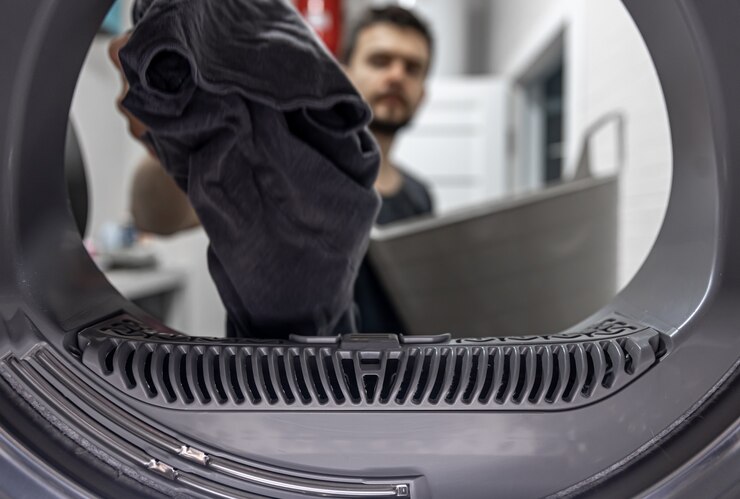In the world of manufacturing and industrial operations, the role of compressed air as a utility is as ubiquitous as electricity, water, or natural gas. However, unlike these other utilities, compressed air requires special attention to ensure its quality and efficiency. Enter the compressed air dryer, a pivotal component in maintaining the integrity of compressed air systems. This guide aims to delve into what compressed air dryers are, why they’re crucial, and how selecting the right type can revolutionize efficiency and innovation within industrial practices.
Table of Contents
What is a Compressed Air Dryer?
A compressed air dryer is an essential device designed to remove moisture from compressed air. During the compression process, air is heated and its ability to hold water vapor increases. Once this air cools, the vapor condenses into liquid form, potentially causing numerous problems, from corrosion of equipment to operational inefficiencies. Compressed air dryers serve to eliminate these issues, ensuring the air is dry and suitable for use in various industrial applications.
Importance of Compressed Air Dryers in Industry
The significance of dry compressed air cannot be overstated. It is critical in preventing the detrimental effects of moisture, such as the degradation of pneumatic machinery, contamination of products, and the overall inefficiency of air-operated equipment. Industries ranging from automotive manufacturing to food processing rely on these dryers to safeguard their operations, enhance product quality, and optimize energy use.
Types of Compressed Air Dryers
There are following Compressor Available in Market:
Refrigerated Air Dryers
These dryers are among the most common, prized for their efficiency and simplicity. They work by cooling the air, which causes condensation of the water vapor. This condensed moisture is then separated and removed from the air stream.
How Refrigerated Air Dryers Work
The process involves a refrigeration circuit that cools the air to a specific dew point, typically around 3°C (37°F), effectively removing the majority of the water vapor. This type of dryer is well-suited for general industrial applications where the air quality requirement is not exceptionally stringent.
Desiccant Air Dryers
For applications requiring extremely dry air (dew points ranging from -20°C/-4°F to -70°C/-94°F), desiccant air dryers are the go-to solution. They utilize a desiccant material that adsorbs moisture from the air.
How Desiccant Air Dryers Work
Air flows through a chamber filled with desiccant, which absorbs moisture directly from the air. Once the desiccant is saturated, it is regenerated (dried) by a process of heating or pressure swing, making it ready to absorb moisture again.
Membrane Air Dryers
Offering a unique approach to drying air, membrane dryers use a special membrane material that allows water vapor to pass through, while retaining the compressed air.
How Membrane Air Dryers Work
These dryers leverage the principle of selective permeation. Water vapor is drawn out of the compressed air through the membrane, resulting in dry air exiting the system. This type of dryer is particularly useful for low-flow applications and those requiring minimal maintenance.
Selecting the Right Compressed Air Dryer
Choosing the appropriate compressed air dryer is pivotal for operational efficiency. Factors to consider include the specific air quality requirements of your application, the volume of air flow, operational environment, and energy consumption. Matching these factors with the capabilities of the dryer ensures optimal performance and longevity.
Maintenance and Troubleshooting
Even the most efficient and innovative compressed air dryers require routine maintenance to perform at their best. Regular checks and servicing can prevent common issues such as blocked drains, overloading of desiccant, and membrane fouling. Familiarizing oneself with common troubleshooting techniques can also significantly reduce downtime.
Innovations in Compressed Air Dryer Technology
The field of compressed air drying is not static; it continually evolves with advances in energy efficiency and smart technology. Modern dryers now offer improved energy-saving modes, heat recovery systems, and integration with IoT devices for better monitoring and control. These innovations not only reduce operational costs but also contribute to a more sustainable production environment.
Conclusion
Compressed air dryers play a crucial role in ensuring the efficiency and reliability of industrial operations. By understanding the different types of dryers, their working principles, and the latest technological advancements, businesses can make informed decisions that lead to improved operational efficiency and innovation. As we continue to push the boundaries of what’s possible in industrial efficiency, the humble compressed air dryer stands as a testament to the importance of foundational technologies in achieving these goals.
FAQs
What is the primary function of a compressed air dryer?
–To remove moisture from compressed air, ensuring it is dry and suitable for industrial applications.
How do I choose the right type of compressed air dryer for my application?
–Consider your air quality requirements, volume of airflow, operational environment, and energy efficiency needs.
What maintenance is required for compressed air dryers?
–Regular maintenance includes checking and cleaning filters, drains, and replacing desiccant or membranes as needed.
How can I troubleshoot common issues with compressed air dryers?
–Common troubleshooting involves checking for blockages, leaks, and ensuring the dryer is operating within its designed capacity and conditions.
What are the latest innovations in compressed air dryer technology?
–Innovations include energy-saving modes, heat recovery systems, and smart technology integration for improved monitoring and control.
How do refrigerated air dryers differ from desiccant air dryers?
–Refrigerated air dryers cool the air to remove moisture, while desiccant dryers use a moisture-absorbing material.
What are the energy efficiency considerations when selecting an air dryer?
–Look for dryers with low energy consumption, heat recovery capabilities, and automatic adjustments based on demand.
Can smart technology really improve the operation of compressed air dryers?
–Yes, smart technology can enable remote monitoring, predictive maintenance, and operational optimizations that improve efficiency and reduce downtime.

